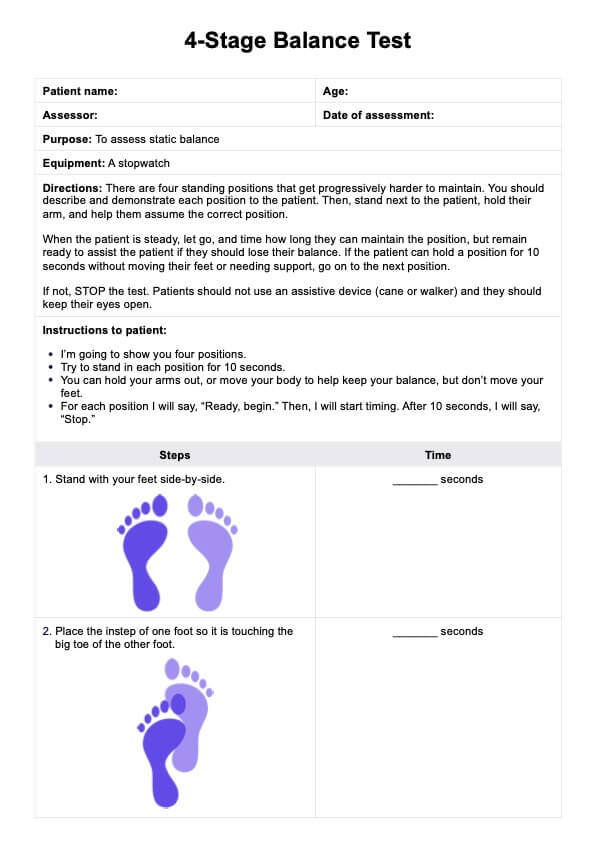The 4-Stage Balance Test is a clinical assessment health care providers use to evaluate a person's static balance and fall risk. It involves four progressively challenging standing positions that test the ability to maintain balance without using an assistive device. The test stops if a patient cannot hold a position for 10 seconds, indicating potential balance deficits.

4 Stage Balance Test
Learn about the 4 Stage Balance Test and use our template when assessing the fall risk of older adults and patients with neurological conditions!
4 Stage Balance Test Template
Commonly asked questions
The 4-step test, also known as the 4-Stage Balance Test, is a standardized assessment used to identify balance impairments and fall risk in individuals. Patients are guided through four correct positions, each requiring them to stand steadily for 10 seconds. Failing to complete any stage suggests a need for further dynamic balance evaluation.
The balance test is performed by having the patient stand in four different positions, starting from feet side-by-side to a tandem stance and finally standing on one foot. The examiner provides initial support to help the patient assume the correct position, then releases and times the patient's ability to maintain it for 10 seconds. If the patient struggles with a position, the test stops, and the patient's results help determine their risk of falling.
EHR and practice management software
Get started for free
*No credit card required
Free
$0/usd
Unlimited clients
Telehealth
1GB of storage
Client portal text
Automated billing and online payments











